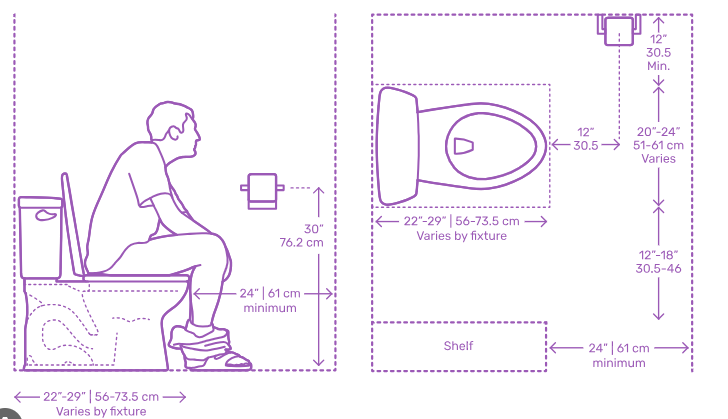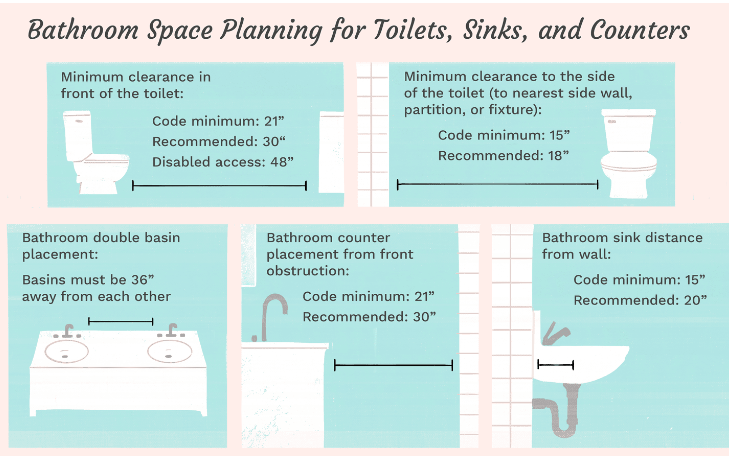When designing or renovating a bathroom, the placement of the toilet is a key consideration. Ensuring the appropriate distance from the back wall is crucial for functionality, comfort, and compliance with plumbing standards. In this article, we will explore the recommended minimum distance from the back wall to the toilet, factors influencing this distance, and best practices for B2B purchasers seeking toilet solutions for commercial spaces.
Understanding Toilet Installation Standards
The minimum distance from the back wall to the toilet is typically defined by plumbing codes, which vary by country and region. These regulations are designed to ensure that toilets are installed safely and efficiently, optimizing space usage.
Standard Distance Requirements

Generally, the standard minimum distance from the back wall to the toilet is 12 inches (30.5 cm). This measurement provides enough space for comfortable use and maintenance while ensuring proper plumbing connections. However, some installations may permit a distance as close as 10 inches (25.4 cm), depending on the toilet design and plumbing specifications.
| Distance from Back Wall | Comfort Level | Installation Flexibility |
|---|---|---|
| 10 inches (25.4 cm) | Moderate | Limited |
| 12 inches (30.5 cm) | Comfortable | Optimal |
| 14 inches (35.6 cm) | Very Comfortable | Flexible |
Table 1: Comparison of Minimum Toilet Distance from Back Wall
How To Rough-In a Toilet (with Dimensions)
Differences in Distance Requirements for Home and Hotel Toilets
The minimum distance requirements for toilets in residential settings and hotels can differ, primarily due to usage scenarios, user needs, and space planning.
- Home Toilets: For residential toilets, the recommended minimum distance is typically 12 inches (30.5 cm). This standard ensures comfort and privacy for family members. Additionally, home toilets need to consider ease of use for children and the elderly, making adequate distance very important.
- Hotel Toilets: In commercial settings like hotels, the design of toilets often needs to accommodate higher usage frequency and varying guest requirements. While the standard of 12 inches still applies, hotels may sometimes opt for larger spaces, such as 14 inches (35.6 cm), to provide a more luxurious comfort and spatial feel. Furthermore, hotel toilets may need to consider accessibility features, which can further influence the distance from the back wall.
Factors Influencing Toilet Distance
Several factors may affect the choice of toilet distance from the back wall, including:
- Toilet Design: The design of the toilet, including its shape and flushing mechanism, can influence the required distance. Compact toilets may allow for shorter distances, while larger models may need more space.
- Bathroom Size: In smaller bathrooms, every inch counts. B2B purchasers must consider the overall layout when deciding on toilet placement to maximize usability without compromising comfort.
- Plumbing Configuration: The existing plumbing infrastructure will play a crucial role. If the rough-in (the distance from the wall to the center of the toilet drain) is standard (typically 12 inches), it is easier to find suitable models that fit.
- Local Codes and Regulations: Always consult local building codes to ensure compliance. Some regions may have specific requirements that deviate from the general standards.
Best Practices for B2B Purchasers
When sourcing toilets for commercial spaces, B2B purchasers should consider the following best practices:
- Consult with Manufacturers: Collaborate with reputable manufacturers like Danube Toilet, which specializes in ODM and OEM solutions for large-scale and small-batch purchases. Understanding product specifications can aid in making informed decisions.
- Consider User Experience: Evaluate the comfort of users by ensuring that toilets are installed at appropriate distances. This not only enhances user satisfaction but also reduces the likelihood of complaints post-installation.
- Assess Future Needs: Think about future renovations or changes in use. A toilet installed too close to the wall may hinder modifications or upgrades later on.
- Conduct Space Planning: Use software or professional services to visualize how different toilet placements affect the overall bathroom layout. This can help identify the best configurations before finalizing orders.

Conclusion
Determining the minimum toilet distance from the back wall is crucial for effective bathroom design, particularly in commercial settings. While home and hotel toilets have different design and functional requirements, adhering to standards, considering design and space factors, and consulting with manufacturers like Danube Toilet can ensure optimal functionality and comfort in bathroom installations. Always remember that a well-planned toilet installation not only meets code requirements but also enhances the overall user experience, ensuring satisfaction and longevity of the installation.
For more insights and tailored solutions for your procurement needs, visit Danube Toilet and explore our extensive range of high-quality toilet products designed for commercial excellence.
